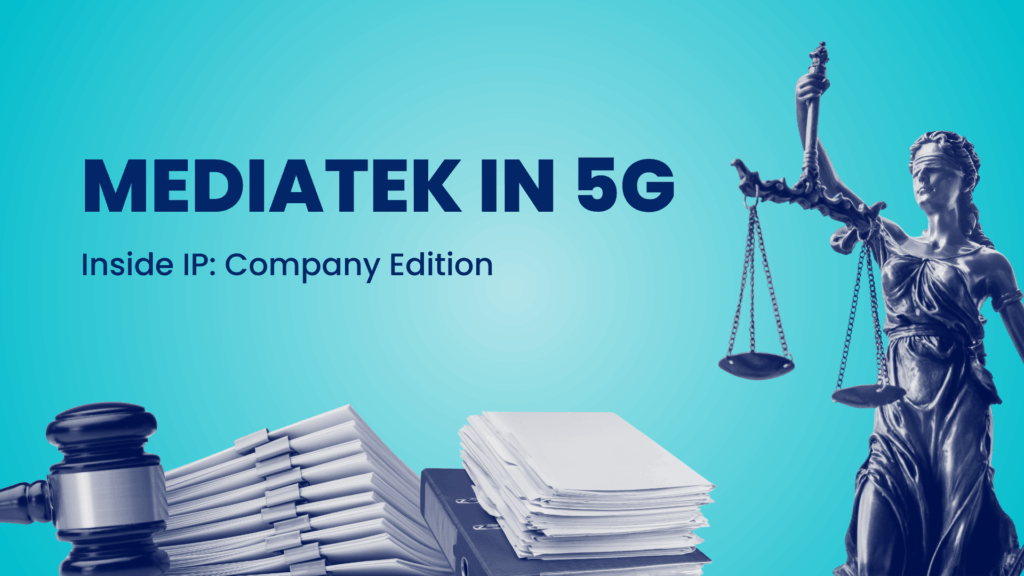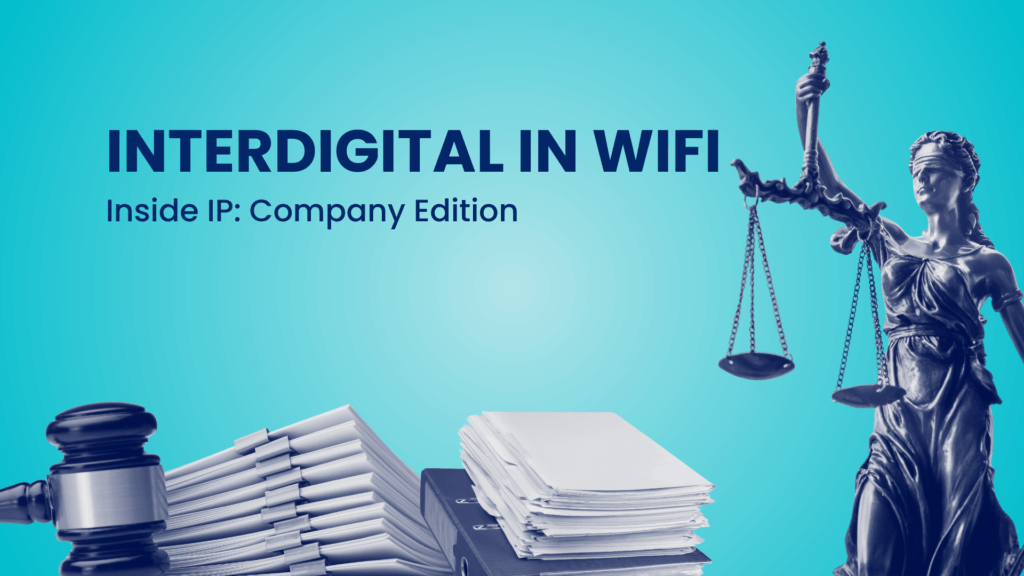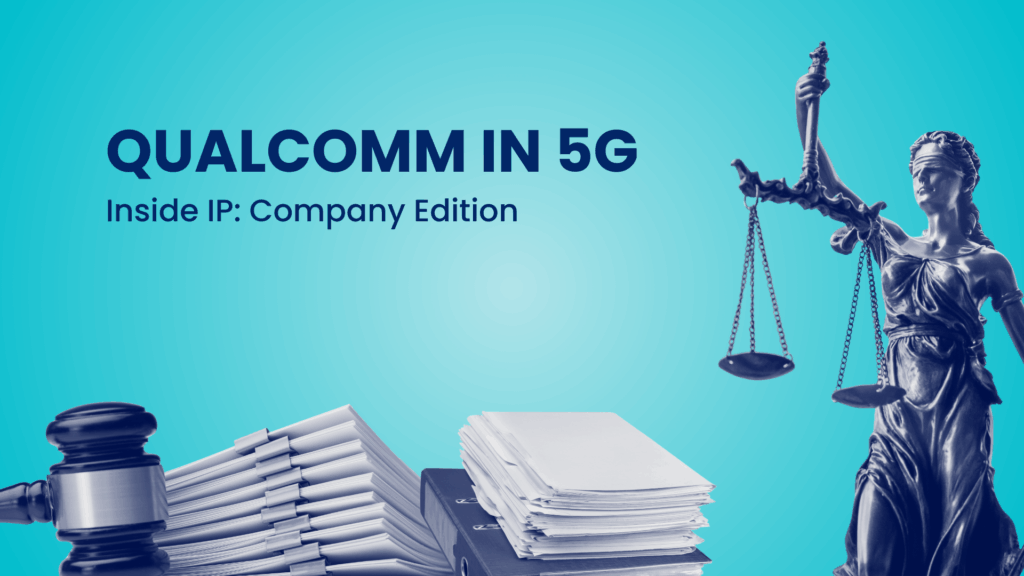Strategic IP Management in the Wireless Domain: A Case Study on Qualcomm
Qualcomm’s IP strategy is not merely about accumulating patents; it’s a dynamic framework that supports its core business—from mobile processors and 5G chipsets to advanced networking and IoT solutions. The company’s market position is intrinsically linked to its extensive patent portfolio, which serves as both a shield against infringement and a powerful tool for licensing and collaboration. An analysis of its patent activities reveals a company deeply invested in protecting its innovations and influencing future technological directions.
Evolving Litigation Risks for Qualcomm and Strategic IP Defense
Qualcomm has historically navigated a complex legal landscape, a testament to its foundational role in critical technologies. Over recent years, its litigation exposure has seen shifts, reflecting a maturing legal environment and its strategic focus. The company’s defensive posture is evident in how it manages challenges from both Non-Practicing Entities (NPEs) and operating companies.
Litigation Trends: From NPEs to Operating Companies
Analyzing Qualcomm’s litigation data over the past decade reveals distinct trends in the types of plaintiffs it faces.
| Period | Total Cases | University | Operating Company | NPE |
|---|---|---|---|---|
| 2020 – 2024 | 50+ | 0 | 20+ (approx. 45%) | 30+ (approx. 55%) |
| 2014 – 2019 | 30+ | 0 | ~4 (approx. 11%) | 30+ (approx. 89%) |
Operating Companies involved in litigation include prominent industry players such as ParkerVision, Apple Inc, Intel Corp, Ziilabs Inc Ltd, and Nvidia Corp.
In the earlier period (2014-2019), NPEs constituted a significant majority of the litigation cases, highlighting a widespread challenge across the industry. However, the more recent period (2020-2024) indicates a notable increase in cases brought by operating companies. This shift suggests a more direct competitive landscape, where established players engage in patent disputes, potentially over market share or interoperability.
Qualcomm’s litigation trends also highlight its leadership in core semiconductor and memory technology domains, alongside its growing involvement in networking innovations. Between 2018 and 2020, Qualcomm faced approximately 31 litigation cases in the Core Semiconductors/Memory Tech domain. Notably, this number significantly decreased to around 5 cases between 2021 and 2023, which could signify strengthened IP protections and a more stable legal environment. Conversely, in the Non-Core Networking domain, litigation activity increased from a range of 3 cases (2018-2020) to around 9 cases (2021-2023), reflecting Qualcomm’s expanding role in 5G infrastructure and IoT connectivity.
Ramping Up Patent Filings Amidst Innovation Opportunities
Qualcomm demonstrates a proactive approach to strengthening its innovation position, particularly in areas of high strategic importance. This is evident in its focused patent filing efforts.
Track One Requests and Qualcomm’s Innovation Focus
In recent years, Qualcomm has strategically utilized the USPTO’s Track One (Prioritized Examination) program, a tool that accelerates patent examination. Over the past two years (up to Q2 2024), out of more than 6,500 U.S. patents granted to Qualcomm, approximately 120 patents were fast-tracked. This indicates a deliberate effort to secure critical IP positions swiftly in key technological domains.
These fast-tracked patents primarily focus on:
- Wireless Communication and Networking: Including Network Configuration and Resource Management, Positioning and Location Services, and Interference and Signal Processing.
- Video, Audio, and Media Streaming: Encompassing Video Encoding and Compression Techniques, and Audio and Media Enhancements.
- Security and Privacy Enhancements: Such as Secure Communication and Data Protection, and Privacy Preservation and User Confidentiality.
This strategic use of Track One filings underscores Qualcomm’s commitment to bringing new, innovative solutions to market rapidly in these high-priority areas, encouraging competitors to observe these developments closely.
Non-Publication Requests (NPR) for Strategic Confidentiality
Qualcomm also leverages Non-Publication Requests (NPR) as a strategic tool to maintain confidentiality around certain innovations. In the past five years (up to Q2 2024), out of over 13,767 U.S. patents granted, Qualcomm filed NPRs for approximately 22 patents. This approach allows the company to delay public disclosure until it is ready to file for foreign patents or secure commercial agreements, thereby protecting early market share.
The technologies behind these strategically protected patents include:
- Memory-efficient Sparse Tensor Computations
- Low Complexity Signal Spectrum Determination
- Microphone and Acoustic Sensor Design
- Constraint Solver Ensembles
- Optimization of Video Decoding and Source Code for Multi-level Memory Systems
These actions suggest that these technologies are of significant business importance, warranting a cautious approach to early exposure and highlighting Qualcomm’s commitment to competitive advantage.
Top Patents with High Licensing Potential
Qualcomm’s portfolio includes patents that demonstrably hold high licensing potential. These assets have been instrumental in influencing competitor patent applications, leading to rejections based on Qualcomm’s prior art. This highlights the foundational strength and value of their wireless communication technology patents, as below patents provided more than 3 rejections to major prominent companies.
| Patent Number | Cited Companies |
|---|---|
| US11562550B1 | Ford, NEC Corp, Zoox, and others |
| US11546029B2 | Various, including those in similar fields |
| US11546938B2 | Various, including those in similar fields |
| US11630197B2 | Various, including those in similar fields |
Data for patents considered in 2023.
These patents, particularly US11562550B1, exemplify Qualcomm’s significant influence and potential for strategic licensing, indicating the critical role these innovations play in wireless communication development.
Competitive Landscape: Companies Innovating in Overlapping Domains
Qualcomm’s robust patent portfolio not only defends its innovations but also significantly impacts the patenting efforts of other companies in similar technological domains. Examiners frequently cite Qualcomm’s patents to issue rejections to applications from other innovators, indicating a clear overlap in technology focus. The list below of prominent companies has received more than 5 rejections using Qualcomm patents.
- LG Electronics Inc
- Huawei Technologies Co., Ltd
- Telefonaktiebolaget LM Ericsson
- NEC Corporation
- Aptiv Technologies AG
This competitive landscape underscores Qualcomm’s strong foundational IP in wireless and related technologies, presenting potential licensing opportunities for these companies seeking to advance similar concepts. Furthermore, Qualcomm’s patents have even led to the abandonment of certain patent applications from other companies, demonstrating the undeniable strength of its IP assets.
- AT&T Intellectual Property
- Fujitsu Limited
- Guangdong Oppo Mobile Telecommunications Corp., Ltd
- Hewlett-Packard Development Company, L.P.
- NEC Corporation
These instances highlight Qualcomm’s profound influence on the IP space, showcasing how its innovations define the boundaries for others.
Forward Citation Data: Qualcomm’s Influence in Wireless Technologies
The foundational nature of Qualcomm’s innovations is vividly illustrated through its highly cited patents. These patents demonstrate their impact across a range of technical domains, driving subsequent innovation by other entities.
| Patent Number | Citations (Approx.) | Key Technological Area |
|---|---|---|
| US9086875B2 | ~1,000 | Mobile device power management |
| US9098153B2 | ~500 | Advanced acoustic imaging |
Data for patents published in the last 10 years.
These citation trends affirm Qualcomm’s pioneering role in critical areas such as energy-efficient mobile technologies, audio experiences, and wireless power solutions, including applications in renewable energy. Such widespread citation also identifies potential collaboration or licensing avenues with companies whose work builds upon Qualcomm’s breakthroughs.
Qualcomm’s Multiple IP Strategies Over the Years
Qualcomm employs sophisticated tactics to optimize its patent portfolio, adapting its filing strategies to maximize protection and market impact. The company has demonstrated tactical thinking around various aspects of patent prosecution.
One notable aspect of Qualcomm’s patent strategy involves its internal patent blockages, where its own earlier patents are cited against newer applications. In the past five years (2019-2024), examiners issued over 3,100 rejections to Qualcomm’s new patent applications by citing its existing patents. This indicates the vast breadth and depth of Qualcomm’s portfolio, where innovations in one area may have implications or overlaps with others. While this resulted in claims requiring amendments in over 3,100 instances to advance prosecution, and approximately 125 applications being abandoned, it also underscores the company’s continuous efforts to refine its filing strategy and manage its extensive IP assets effectively. This ongoing optimization helps ensure that new innovations are clearly defined within its already comprehensive portfolio.
Track One Requests and Non-Publication Requests
As highlighted earlier, the strategic use of Track One requests for accelerated examination and Non-Publication Requests to maintain confidentiality are key components of Qualcomm’s IP tactical thinking. These methods allow Qualcomm to expedite protection for critical technologies or to delay public disclosure until market conditions are optimal.
Geographic Patent Filing Trends: Which Countries is Qualcomm Filing Most Patents In?
Qualcomm’s patent portfolio is globally distributed, underscoring its vast market reach and strategic focus on key technological hubs worldwide.
| Jurisdiction | Number of Patents (Approx.) | Strategic Importance |
|---|---|---|
| United States | Over 81,900 | Home market, strong IP protection, competitive arena |
| WIPO (Global Patents) | Over 47,800 | Multi-regional IP protection |
| European Patent Office (EPO) | Over 43,900 | Adherence to strict regulatory standards, strong tech market |
| China | Over 33,200 | Major market for telecommunications and manufacturing |
| Korea | Over 18,700 | Technology powerhouse in mobile communications |
| Taiwan | Over 17,000 | Critical hub for semiconductor manufacturing |
| Brazil | Over 8,800 | Growing interest in Latin America’s digital adoption |
| Russia | Over 1,700 | Emerging market for innovation |
| Israel | Over 1,700 | Innovation ecosystem |
| Japan | Over 4,400 | Significant tech market |
| Singapore | Over 1,400 | Regional tech hub |
| India | Over 650 | Rapidly growing tech ecosystem |
Qualcomm’s dominant presence in the United States and significant coverage across Asia-Pacific (including China, Korea, and Taiwan) reflects these regions central role in global electronics manufacturing and tech innovation. The company’s strategic presence in emerging markets like India and Brazil indicates its long-term vision for growth in rapidly expanding digital infrastructures.
Qualcomm’s Influence on Wi-Fi Standards and Beyond
Qualcomm’s commitment to advancing wireless standards is evident in its active contributions to Wi-Fi development, from Wi-Fi 6 to the emerging Wi-Fi 8. While its contribution share in Wi-Fi 7 saw a slight adjustment from Wi-Fi 6, this reflects a strategic diversification across a broader range of critical technologies like 5G, IoT, and Automotive, where Qualcomm also holds significant positions.
The company has made substantial contributions to the Wi-Fi 7 (802.11be) standard, with around 125 contributions focusing on:
- Multi-link operation
- EHT Signaling and Format
- Multi-AP Coordination
Qualcomm also holds a considerable number of patent families in these areas, making it a key licensing option for companies entering the Wi-Fi 7 market. Furthermore, Qualcomm is already actively contributing to Wi-Fi 8 (802.11bn) with around 42 contributions, focusing on areas like Seamless Roaming and Unequal Modulation in MIMO, signaling its ongoing commitment to shaping the future of wireless connectivity.
Conclusion
Qualcomm’s IP strategy is a masterclass in leveraging intellectual assets for sustained market leadership. From its proactive patenting and strategic litigation management to its influential role in shaping global wireless standards and a geographically diverse patent portfolio, Qualcomm continuously reinforces its position as an industry pioneer. The company’s focus on high-potential technologies, exemplified by its fast-tracked patents and confidential innovations, ensures it remains at the cutting edge of wireless communication.
As the digital landscape evolves, Qualcomm’s adaptable and forward-looking approach to intellectual property will undoubtedly continue to drive innovation, secure its competitive advantage, and solidify its role in powering the next generation of connected experiences worldwide.
Subscribe to our Inside IP newsletter for insights into patent filings, litigation shifts, licensing opportunities, and strategy breakdowns across tech and innovation-driven sectors.
Track your Competitors’ IP Strategy
Subscribe for Updates







